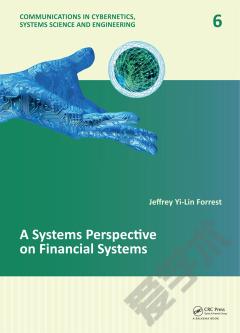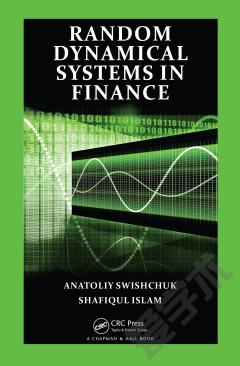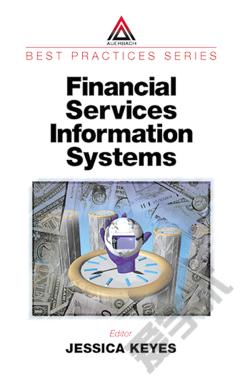A Systems Perspective on Financial Systems
PART 1 Preparation 1 Overview 1.1 The basics of money 1.1.1 The meaning and function of money 1.1.2 Different kinds of money 1.2 Why is a systemic approach important? 1.2.1 A two-dimensional spectrum of knowledge 1.2.2 The systemic yoyo model 1.3 Problems investigated using systems thinking and methodology 1.3.1 Problems systems science could address 1.3.2 Is 1 + 1 = 2 universally true? 1.3.3 How modern science resolves problems? 1.4 Main results of this book 2 The yoyo mode: Properties and justifications 2.1 Properties of systemic yoyos 2.1.1 The field structure 2.1.2 The quark structure of systemic yoyos 2.2 Laws on state of motion 2.2.1 The first law on state of motion 2.2.2 The second law on state of motion 2.2.3 The 3rd and 4th laws on state of motion 2.2.4 Validity of figurative analysis? 2.3 Theoretical justifications 2.3.1 Blown-ups: Moments of transition in evolutions 2.3.2 Mathematical properties of blown-ups 2.3.3 The problem of quantitative infinity 2.3.4 Equal quantitative effects 2.4 Empirical justifications 2.4.1 Bjerknes' circulation theorem 2.4.2 Conservation of informational infrastructure 2.4.3 Silent human communications PART 2 Domestic financial system: Seen as a closed system 3 The financial infrastructure 3.1 Composition of the financial system 3.2 Monetary standard of currencies 3.3 Definition of money 3.4 Credit 3.5 Financial markets 3.6 The banking system 3.6.1 The modern banking system 3.6.2 The banking business 3.7 Innovation: Livelihood of national financial infrastructure 3.8 Some final remarks 4 Supply and demand of money 4.1 The concept of supply and demand: Two interacting economic forces 4.2 The supply of money 4.2.1 Creation of currency 4.2.2 Monetary multiplier 4.2.3 Money supply models 4.3 The demand of money 4.3.1 Classical quantity theory of money 4.3.1.1 The theory of cash transactions 4.3.1.2 The cash balance theory 4.3.1.3 The income quantity theory 4.3.2 Keynesian demand for money 4.3.3 Further developments of Keynesian theory 4.3.4 Modern quantity theory of money 4.3.5 Empirical tests of money demand 4.3.5.1 Interest rate and demand for money 4.3.5.2 Stability of the demand for money 4.3.5.3 Circulation speed of money 4.4 A few final comments 5 Interest: A factor influencing monetary supply and demand 5.1 Loanable funds 5.2 Liquidity preference 5.3 Interest rate and total output 5.4 Risk structure of interest rates 5.5 Term structure of interest rates 5.6 Market behaviors and response to different-scale investment opportunities 5.7 Some concluding words 6 Monetary policy: Another factor influencing monetary supply and demand 6.1 Goals of monetary policy 6.1.1 Tasks and contents of monetary policy 6.1.2 Goals of monetary policy 6.2 Medium-term goals of monetary policy 6.3 Tools of monetary policy 6.4 Conduction mechanism of monetary policy 6.5 Empirical analysis on the importance of money 6.6 Money and fiscal policies in the IS-LM model 6.6.1 Movement of IS curve 6.6.2 Movement of LM curve 6.6.3 Movement of total output and interest rate 6.6.4 The crowding-out effect 6.7 Inflation 6.7.1 The phenomenon 6.7.2 Price levels of goods 6.7.3 Causes of inflation 6.7.4 Game theory explanation of stagflation phenomena 6.7.5 Dealing with inflation 6.8 Systemic structure of monetary policy 7 Portfolio of assets 7.1 Constant existence of investment opportunities 7.1.1 Economic yoyo flows 7.1.2 A simple model for perfect capital markets 7.1.3 A simple model when capital markets are imperfect 7.2 Interest rates and yields 7.2.1 Present values 7.2.2 Yield to maturity 7.2.3 Prices, rates of return, and yields of bonds 7.3 Factors affecting portfolio choices 7.4 Balance between risk and yields 7.4.1 Diversity of investment 7.4.2 Mean variance utility 7.4.3 Determination of the portfolio proportion 7.4.4 Estimate of the ss coefficient 7.4.5 Portfolio proportions 7.4.6 Asset pricing 7.5 Portfolio selection 7.5.1 Expected yields of portfolios 7.5.2 Demand of assets 7.5.3 Advantages of diversity PART 3 International financial system: Seen as an ocean of interacting semi-closed systems 8 International Monetary System 8.1 Introduction of the international monetary system 8.1.1 The composites of the IMS 8.1.2 Classifications of the IMS 8.1.3 The functions of the IMS 8.2 Development of the IMS 8.2.1 The international gold standard 8.2.2 The Bretton Woods System 8.2.3 The Jamaica system 8.3 Improvements on the IMS 8.3.1 Main suggestions for improving the IMS 8.3.2 An expected future of the IMS 8.4 The European monetary system 8.4.1 The history 8.4.2 The European Union of money 8.4.3 Economic impacts of the euro 8.5 International organizations of finance 8.5.1 The International Monetary Fund 8.5.2 The World Bank Group 8.5.3 Bankruptcy of nations: An ongoing thought 8.6 The three-ringed structure of stable economic systems 8.6.1 Three-ringed systemic structure of each economic system 8.6.2 Economic energy and three-leveled energy transformation 8.6.3 Non-conservative evolution of economic energy 8.7 Some final words 9 International reserves and capital flows 9.1 Introduction to international reserves 9.1.1 Characteristics of international reserves 9.1.2 Components of international reserves 9.1.3 Borrowed international reserves 9.2 Management of international reserves 9.2.1 The management of magnitudes 9.2.2 The structural management 9.2.3 Reserves of the USA, Europe, Japan, and Great Britain 9.3 Potential problems regarding foreign currency reserves 9.3.1 The problem of capital flight 9.3.2 The problem of credibility 9.3.3 The problem of currency substitution 9.4 Capital flows across national borders 9.4.1 Types of international capital flows 9.4.2 Causes, present state and expected future of capital flows 9.4.3 Impacts of international capital flows 9.4.4 International capital flows and national financial systems 9.5 Interactions between economic yoyo fields 9.5.1 Classification of economic yoyo fields 9.5.2 Combinations of economic yoyos through meridian fields 10 Financial globalization and its consequences 10.1 The structure of the international financial market 10.1.1 The international money market 10.1.2 The international capital market 10.1.3 The Euro currency market 10.1.4 International foreign exchange 10.2 Causes and effects of international capital flow 10.2.1 Characteristics of capital flow in the international market 10.2.2 Reasons for international capital flows 10.2.3 Positive effects of international capital flows 10.2.4 Impacts of capital flows on domestic and international equilibria 10.3 Debt and bank crises: Impacts of financial globalization 10.3.1 Debt crises of developing countries 10.3.2 Bank crises 10.4 Currency crises: Impacts of financial globalization 10.4.1 The concept of currency crises 10.4.2 Causes of currency crises 10.4.3 Asian currency crises: A real-life case 10.4.4 Solution to currency crises as analyzed using Asian scenario 10.5 Will financial attacks be always possible? 10.5.1 How environments determine the nature of economies 10.5.2 Existence of financial centers under different regulations 10.5.3 Centralizable economies 10.5.4 Forever existence of emerging economic centers 11 Financial crises and currency wars 11.1 International financial crises 11.1.1 Financial crises and currency crises 11.1.2 Theories of international financial crises 11.2 Speculative attacks and currency crises 11.2.1 Short-term capital flows and speculative attacks 11.2.2 Recent speculative attacks and currency crises 11.2.3 New characteristics of recent speculative attacks 11.2.4 Chilean capital account liberation: A case of success 11.3 Currency wars and possible self-defense 11.3.1 One possible form of currency wars 11.3.2 A strategy of self-protection 11.3.2.1 A model for categorized purchasing power 11.3.2.2 Functional relationship between P and (D - S) 11.3.2.3 Separating economic categories by using feedback 11.3.2.4 A strategy for national defense 11A Feedback: A general systems approach 11A.1 Introduction 11A.2 Feedback and its properties 11A.3 Properties that are feedback invariant 11A.4 A characterization of decoupling 11A.5 The main theorem 12 Modern China: A quick glance 12.1 Appearance and development of chinese central bank 12.1.1 A brief history 12.1.2 Hierarchy of Chinese central bank 12.1.3 Business of the people's bank of China 12.1.4 Money supply of China 12.2 Chinese financial system 12.2.1 Chinese banks 12.2.2 Other financial organizations 12.2.3 Business of lending and investing 12.2.4 Other banking businesses 12.3 Financial reforms of China 12.3.1 Need for reform 12.3.2 Key aspects of financial reform 12.4 International reserves of China 12.4.1 Fast increase in foreign reserves 12.4.2 Management of foreign reserves 515 12.4.3 How can the risk of US$3,442.65 billion reserves be resolved? 12.5 Understanding China culturally 12.5.1 What is China as a civilization? 12.5.2 How will China revive through adopting beneficial elements 12.5.3 What kind of democracy would China potentially embrace? 12.5.4 External pressures China currently experiences 12.5.5 Will China be peaceful with neighboring economies? 12.6 Will economic prosperity visit China soon?
{{comment.content}}








 京公网安备 11010802027623号
京公网安备 11010802027623号